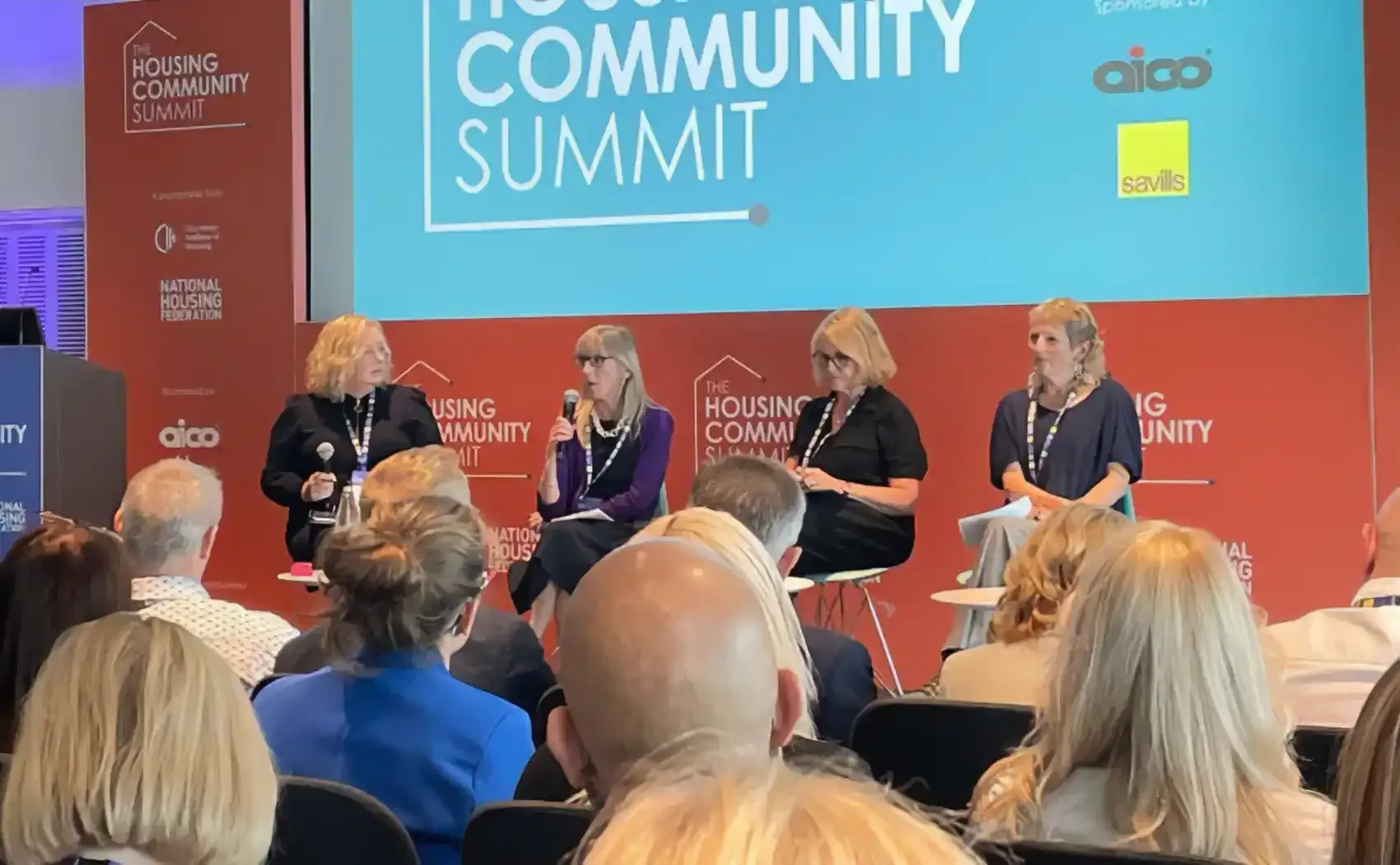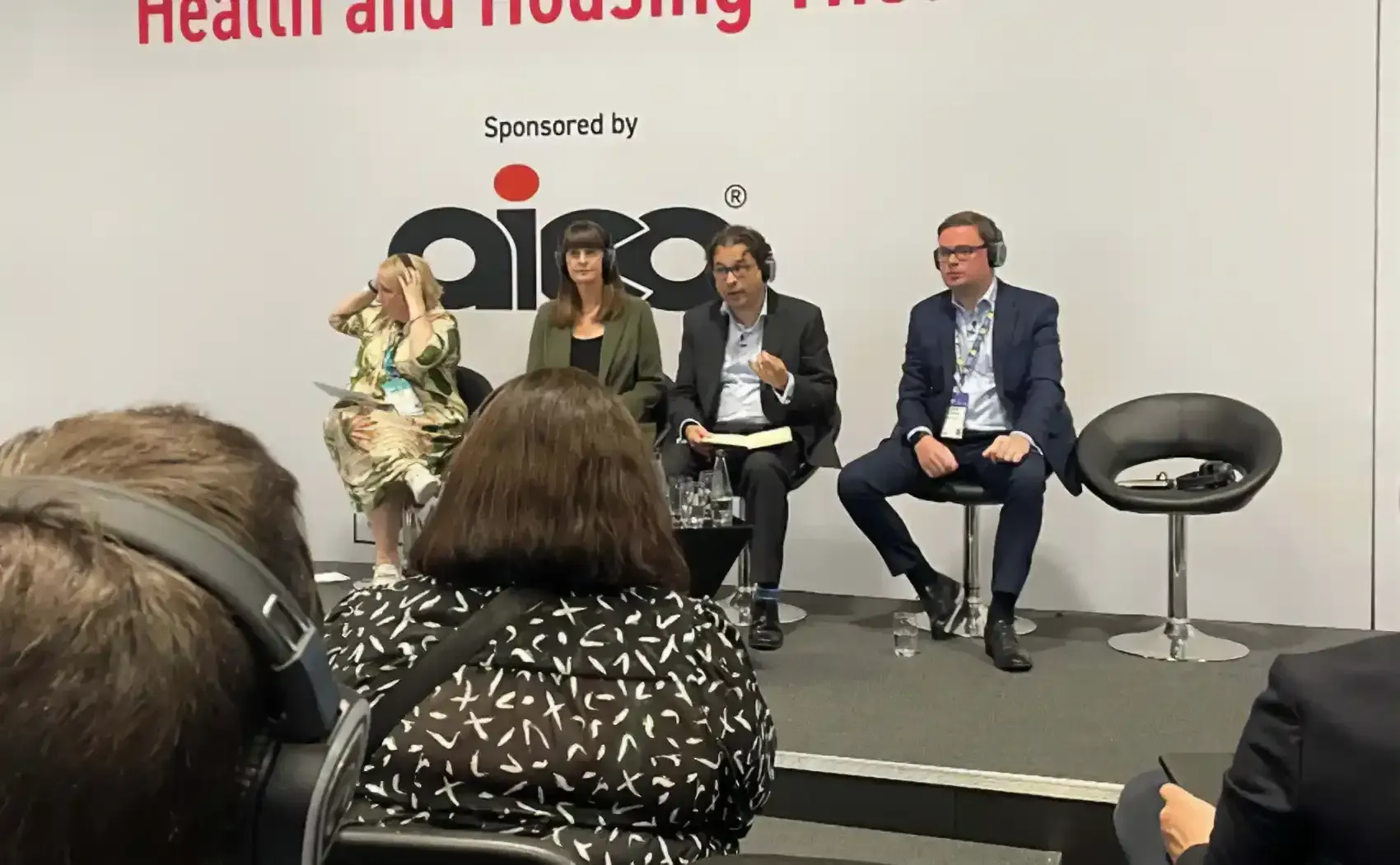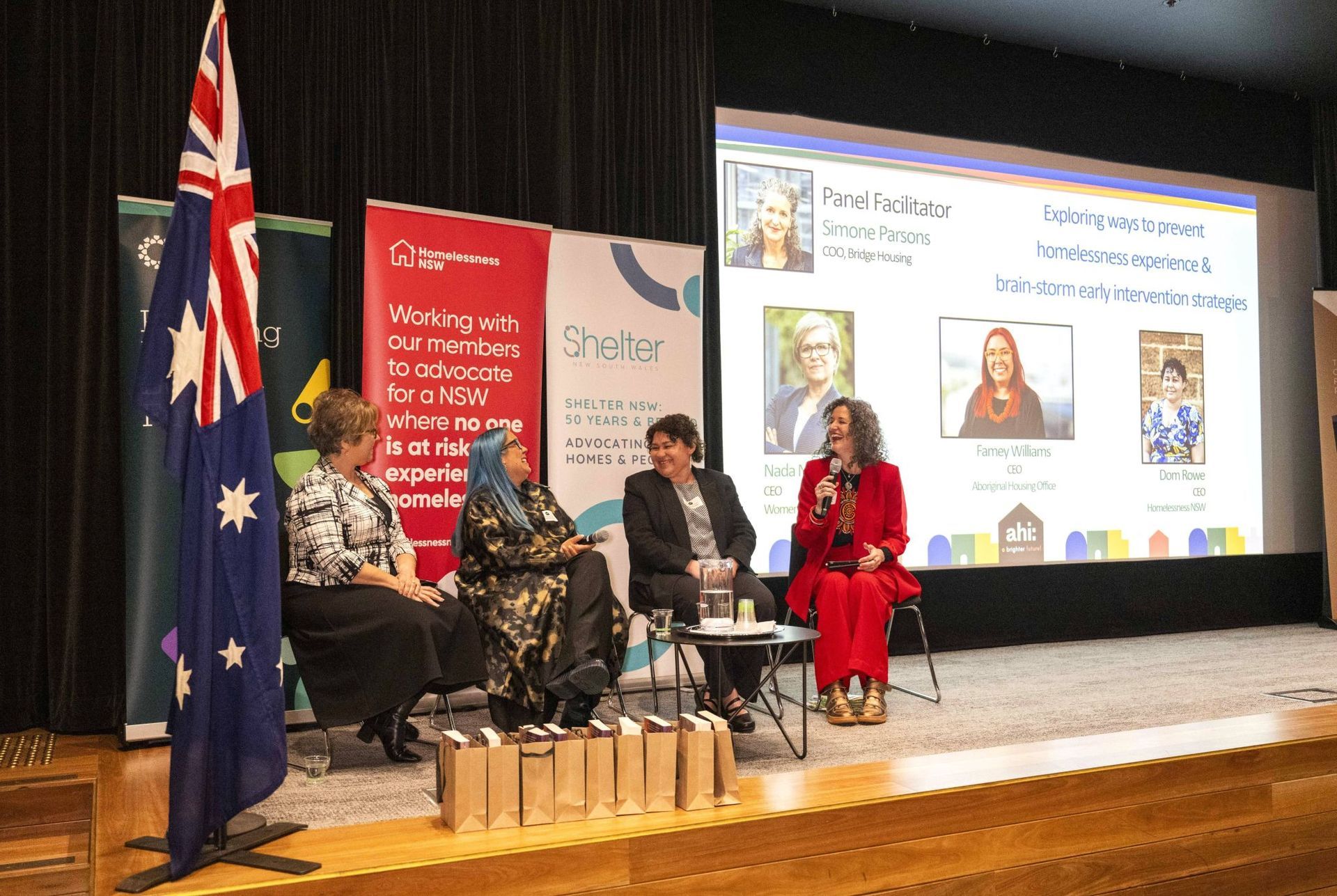The first ever Housing Community Summit was billed as a groundbreaking collaboration between Chartered Institute of Housing (CIH) and National Housing Federation (NHF). And, by all accounts, this groundbreaking two-day event hosted in Liverpool, UK, lived up to the hype.
Nearly 3,000 delegates and more than 300 speakers arrived at ACC Liverpool on 9th & 10th September 2024, all of whom were keen to learn, network, collaborate and get stuck into the dozens of topical and insightful sessions on offer.
But, if an unprecedented collaboration between two of the largest professional bodies in the sector wasn’t enough, it was also the first major housing conference to be held post-election. And that meant there was lots (and lots) to talk about.
The political winds of change
“There’s an enormous amount to be welcomed so far [from the new government],” CIH Chief Executive Gavin Smart said in his joint opening address with his NHF counterpart, Kate Henderson. “The sector and the government are on the same page," he added.
Housing Minister Matthew Pennycook reaffirmed as much in his keynote address, while speaking of his government’s commitment to getting “the country building again" and delivering 1.5 million homes by the end of this parliament.
“In opposition, I said many times that bringing the housing crisis to an end would not be a quick or easy task,” Matthew said. “But that it could be done by a government prepared to finally tackle its fundamental causes, with sustained focus, energy and determination.
“That belief is what has guided our actions as a department over the past nine weeks.”

Matthew Pennycook outlined the series of changes the government plans to make or has already made on housing. These include giving all local authorities in England mandatory housing targets and changing the way these targets are calculated to better reflect local needs; strengthening “but also reforming” the presumption in favour of sustainable development “so that its use as a failsafe does not green-light poor-quality schemes"; and “bold reforms” to the National Planning and Policy Framework (NPPF) “to deliver the biggest increase” in social and affordable housing delivery “in a generation”.
He also said his government was “acutely aware” more “needs to be done” to support councils and housing associations. He added that his government has committed to setting out plans in the next fiscal event to give social landlords “the rent stability they need to borrow and invest” and provide them with “certainty” about future government investment at the spending review.
One of the core planks of the government’s strategy to deliver 1.5 million new homes by the end of this parliament is to make full use of brownfield (and ‘grey belt’) land. But how big a role can brownfield actually play in ameliorating the housing crisis?
“It’s part of the solution; not the whole solution,” Kate Henderson neatly put it at a session dedicated to exploring the potential of brownfield. While delivering new homes on brownfield land is “absolutely necessary”, she said building on brownfield alone wouldn’t be enough to deliver the number of homes needed.
SNG (formerly Sovereign Network Group) Chief Executive Mark Washer agreed. “It’s not a silver bullet but a golden opportunity,” he said.
Decarbonisation and energy efficiency is another area on which the government appears intent on progressing. Minister for Energy Consumers Dr Miatta Fahnbulleh was on hand to talk about her role in “bringing social housing and decarbonisation together”. She spoke of the need to upgrade and decarbonise existing homes and ensuring new homes are built as part of a “low-carbon future”.
“[It is an] absolute imperative to prioritise the upgrade of social and council homes,” she said, adding: “If we get this right, the impact will be huge.”
Miatta keenly pointed out the link between energy-inefficient homes and fuel poverty, highlighting the £6.6 billion that this government has pledged as part of its Warm Homes Plan. She said more detail – through which grants and low-interest loans will be made available for energy-efficiency and low-carbon measures such as insulation and solar panels – “should” be provided in the Autumn Budget.
Dr Miatta Fahnbulleh was also present for the launch of a new public-private alliance – the Future Homes Liverpool City Region plan – aimed at delivering homes with zero energy bills in the Liverpool area. Liverpool City Region Mayor Steve Rotheram officially launched the initiative outside a modular home, constructed in just a week, situated next to the ACC venue. It is hoped the Liverpool region will become a “centre of excellence” for offsite construction.

Works in progress
While the new government beds in and gets to work with its proposed changes, the sector continues to adapt to changes already set in motion by recent legislative milestones – namely the Social Housing (Regulation) Act, which passed last summer.
One of the most notable is the new consumer standards regime, which came into effect in April this year and sees social housing providers – including local authorities – assessed on things such as tenant engagement and communication and the safety and quality of homes.
In a packed-out session exploring the new regulatory regime, the Regulator of Social Housing’s Fiona MacGregor provided an update on the first few rounds of inspections, which have so far seen around 25 social landlords (at the time of writing) receive an in-depth assessment and a subsequent grading based on the Regulator’s findings.
Fiona pointed out that, so far, there has been a “pretty even split” between C1, C2 and C3 gradings, with C1 and C2 denoting compliance and C3 (and C4) denoting non-compliance.
She added that she was “slightly surprised” that the first batch of inspections had more C1 gradings than the Regulator initially inspected. She said this could be an “accident” attributable to the “particular makeup” of that first batch of providers.
For those landlords that have so far not met the standards, MacGregor said many had struggled with health and safety compliance. She also said, in some cases, landlords were “still not really knowing what needs to be done” due to inadequate data collection and analysis.
Moving on to the Tenant Satisfaction Measures (TSMs), which came into effect in April 2023, Fiona MacGregor asserted they are “not just a tick-box exercise”. She advised attendees to use them to help “get under the skin of what they [tenants] are telling you”.
“Listen to complaints and show that curiosity. What is it actually saying about the service you’re providing?” she said.

Building and fire safety is another area on which the whole sector has been striving to improve. And this was noted in a session titled ‘Seven years on from Grenfell: Are we getting it right?’, which took place just a week after the publication of the final report from the Grenfell Inquiry.
The report laid the blame for the deaths of the 72 people who died in the fire at the feet of several actors, including politicians, cladding manufacturers and the Kensington and Chelsea Tenant Management Organisation. As summarised by Rhys Moore, the NHF’s Executive Director of Public Impact, the victims of Grenfell were “failed not by one organisation but by many”.
“A serious failure of regulation and then a serious failure of cultures and practice among a range of industries [contributed to the fire],” he said.
However, as both the Grenfell report and the session’s panellists made clear, there is still much more to do to ensure such a tragedy never happens again. Martina Lees, who writes for The Times and The Sunday Times and often reports on building safety, said there still “could be up to 558,000 people living in flats with fire risks”. She also pointed out that just 27 per cent of social buildings identified by the government as needing remediation have been fixed.
For Anne Waterhouse, the Chief Executive of Wandle Housing Association, part of the problem is funding and the lack of financial support from the government. “The financial burden on social housing providers just doesn’t feel fair,” she said, adding that, while they have not necessarily been able to do so, there is “not a single social landlord” that does not want to remediate their buildings quickly.
Despite the challenges and the work still to do around building safety and remediation, progress had been made. “If we didn’t recognise that, we’d be in a very bad place,” Rhys Moore said.
Homing in on health
Housing and health is currently a big area of discussion in the sector, with the question of whether there is a need to establish a royal commission on housing and health – as called for by the Housing Ombudsman – emerging as a key area of debate during the conference.
“Do we need a royal commission? My response first of all was ‘no’,” said environmental health and housing consultant and journalist Dr Stephen Battersby at a session chaired by CIH policy and practice officer Sam Lister.
“But then I had second thoughts, because perhaps the answer is ‘yes’ but with a wider remit,” he added, arguing that some of the issues highlighted by Ombudsman also pertain to the private sector.
Gavin Smart was “in two minds” about the merits of a royal commission. While he conceded that a royal commission would bring more attention to the links between housing and health, he said getting the initiative up and running would likely take “a very long time”. He added that such commissions “can be used as a mechanism for kicking the can down the road”.
“I don’t think it needs a royal commission to fix it; I think it needs a government focused on outcomes,” Kate Henderson added.

The Ombudsman’s sector learning and development manager, Polly Cox, was on hand to explain some of the thinking behind the call for a royal commission. “There needs to be a renewed focus on housing as a public health intervention,” she said, pointing out that poor quality housing costs the NHS around £1.4 billion each year.
Cox also said “so many health issues” can be either be worsened or improved by a home, arguing for the need to increase the awareness of the link between the two areas so that as many homes as possible have a positive rather than negative impact on people’s health.
This focus on housing and health coincided with the launch of Healthy Homes, Healthy Places, a partnership launched by CIH and fire safety specialists AICO to highlight the importance of homes and communities as a key building block for health and wellbeing.
“We want to promote healthy homes and healthy neighbourhoods,” said Gavin Smart, adding that while there are plenty of challenges in this area, there are also “big opportunities”.
A good start
With a new government that appears more receptive to the needs of the sector than previous regimes, there is hope within the sector things are on the up – despite the gloomy economic backdrop. That optimism could be felt all throughout the Housing Community Summit, with a palpable sense of alacrity pervading all areas of the conference, from the exhibition area to the main stage, the fringe events to the networking zones.
There will no doubt be much to discuss when the
Housing Community Summit returns to the ACC in Liverpool on 8th & 9th September 2025.
Share This Article
Other articles you may like








